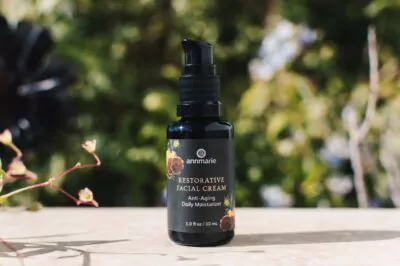Table of Contents[Hide][Show]
You wash, wash, and wash again, and still you have acne breakouts. If so, you’re not alone. Statistics estimate that about one-quarter of adult men and over half of adult women suffer from adult acne at some time in their lives. And apparently, the skin condition is hitting more of us than ever before.
A study published in the International Journal of Cosmetic Science in 2004 stated, “Recent epidemiological studies show that there appears to be an increase in post-adolescent acne, and that the disease is lasting longer and is requiring treatment well into the mid forties.”
Acne isn’t just a skin condition, however. It can affect our self-confidence, self-esteem, and at its worst, can lead to depression and social anxiety. Therefore, most of us will do anything to get rid of it, including turning to harsh acne treatments like benzoyl peroxide.
Though effective against acne, benzoyl peroxide is not the best option for mature skin. Here’s why.
It worked when you were a teen, but benzoyl peroxide can be harmful to mature skin.
What is Benzoyl Peroxide?
An organic compound in the peroxide family, benzoyl peroxide is used as an acne treatment, as well as for bleaching hair and teeth. It’s made in the scientific laboratory by treating hydrogen peroxide with benzoyl chloride. The resulting ingredient is used at 2.5 to 10 percent concentrations in acne treatments, because it kills the acne causing bacteria called “Propionibacteria acnes,” or “P. acnes.”
What are the Concerns?
First of all, if you used acne treatments with benzoyl peroxide when you were a teenager, don’t expect your skin to react the same when you’re 30 or 40 years old. The ingredient causes dryness, which will be more visible on mature skin that’s no longer as moist and supple as it once was.
Many adults trying to fight acne with this ingredient enter a vicious cycle, where they use the benzoyl peroxide to treat acne, then end up with dry skin, so they apply more moisturizer to combat the dryness, but that ends up clogging pores so they have to go back to using more acne treatment. The pimples and blackheads may go away, but skin ends up looking tired, dull, and dry, even flaky.
We all know what makeup looks like on dry skin, too. You may be happy not to use so much concealer on your blemishes, but then wonder why your skin suddenly looks like you’ve added 10-20 years to it.
Unfortunately, that’s not the end of the cycle. The dryer your skin becomes, the more oil your skin tries to produce to combat the dryness, which can end up causing more blocked pores, giving you tiny bumps and even cystic acne. Meanwhile, the irritation may cause redness and inflammation.
Benzoyl peroxide can also cause burning, itching, peeling, and even swelling in those with sensitive skin. Though you may build up a tolerance to the ingredient over time, you may also become more and more sensitive to it.
Encouraging Free Radical Damage
Here’s another concern about this ingredient for people of any age: it produces free radicals. Free radicals are the damaging molecules that cause sun damage and premature aging on the skin. They are also responsible for encouraging changes in skin cells that can lead to skin cancer. We use antioxidants to fight against free radical damage. Why then, should we add something to the skin that actually encourages the formation of free radicals?
Free radicals can also slow wound healing, which can affect how long your skin takes to heal over acne scars, redness, and other irritations. This is another reason why continued use of benzoyl peroxide can, in the end, make your skin look worse than before.
Even the FDA has made changes in how they view this ingredient. In the 1980s, they categorized it as a “category I” ingredient, which meant it was considered completely safe to use. In the 1990s, after animal studies linked benzoyl peroxide to tumor growth, they changed that classification to a “category 3,” which means “safety is unknown.”
Researchers conducted more studies, and after reviewing the findings, the FDA restored the category 1 classification in 2010. Studies at this time, however, also found that benzoyl peroxide can decrease the skin’s tolerance to UV radiation, increasing the risk of sunburn. Now products containing the ingredient must have warnings stating they should be used with sunscreen.
* * *
Photo courtesy Shutterstock.








Leave a Reply